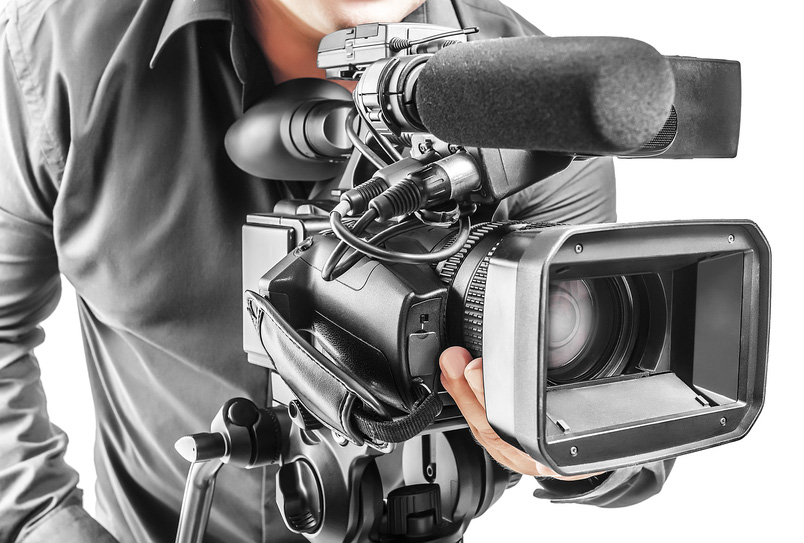How Legal Videography Enhances Court Discussions and Evidence
How Legal Videography Enhances Court Discussions and Evidence
Blog Article
Exploring the Mechanisms of Lawful Videography: Introduction Its Procedure in Shielding Authentic Aesthetic Testament for Judicial Proceedings
In the realm of judicial proceedings, the function of lawful videography stands as a foundation in preserving and providing aesthetic proof. As modern technology continues to advance, the systems behind legal videography have actually come to be progressively intricate, providing an essential layer of credibility to testimonies caught on video.
Historical Advancement of Legal Videography
Taking a look at the historic progression of lawful videography exposes a substantial makeover in the catching and discussion of visual evidence within the lawful landscape. In the past, legal process greatly counted on composed photos and records to record events and offer proof. Nonetheless, with the development of video clip modern technology, the lawful sector observed a standard shift in exactly how visual testimony was captured and offered.
The advancement of legal videography can be traced back to the late 20th century when advancements in video clip recording tools made it extra obtainable for use in courtrooms. This technological development not only boosted the accuracy and reliability of visual evidence however likewise revolutionized the means situations were offered to juries and courts (Legal Videography). Lawyers began to recognize the influential power of video recordings in communicating feelings, subtleties, and non-verbal signs that created records or photos alone might not catch successfully

Modern Technology Improvements in Video Clip Paperwork
What essential technical advancements have transformed video documents in the lawful field? The legal area has seen substantial advancements in video documents modern technology that have improved the credibility and integrity of aesthetic evidence in judicial procedures. One of the crucial developments is high-def (HD) video recording abilities, which give crystal-clear photos and sharp information that are critical for precisely recording testaments, faces, and other aesthetic cues. Furthermore, the combination of timestamping and metadata functions in video paperwork devices has actually made it possible for exact documentation of when and where the video clip was recorded, guaranteeing the stability of the evidence presented in court.
Additionally, developments in video security and watermarking technologies have reinforced the security and tamper-proof nature of video clip proof, protecting it against unapproved modifications or tampering. The development of cloud storage space options and remote access abilities has streamlined the storage, access, and sharing of video proof, assisting in smooth collaboration among legal experts and making certain reliable access to important aesthetic statements when required. These technological advancements in video documents have actually definitely revolutionized the lawful field, improving the precision, reputation, and admissibility of aesthetic evidence in judicial proceedings.
Function of Legal Videographers in Court Room Setups
The advancement of video documents technology in the legal area has demanded an essential duty for legal videographers in courtroom settings, guaranteeing the stability and dependability of visual testaments offered throughout judicial proceedings. Lawful videographers play a basic role in catching and preserving precise aesthetic proof that can be pivotal in lawsuit. Their responsibility encompasses setting up tools, videotaping procedures, and creating top quality videos that properly show the occasions in the court.
Furthermore, lawful videographers commonly function carefully with legal teams to make certain that the video clip proof straightens with the situation's requirements and can be successfully presented in court check out here to sustain the lawful debates being made. Generally, the duty of lawful videographers in courtroom setups is essential in supporting the principles of justice and guaranteeing the openness of lawful procedures. Legal Videography.

Ensuring Admissibility and Honesty of Video Proof
To maintain the reputation of aesthetic proof presented in legal process, ensuring the admissibility and stability of video evidence is a critical duty for legal videographers. Admissibility describes the approval of proof by the court, and for video clip evidence to be admissible, it has to satisfy particular criteria. Legal videographers play a crucial role in guaranteeing that the videos they capture abide with the rules of proof, such as credibility, integrity, and relevance.
Integrity of video clip evidence entails keeping the originality and precision of the footage from the time it is tape-recorded up until it is presented in court. This includes securely storing the video clip data, recording the chain of custodianship, and stopping any type of tampering or alterations. Legal videographers need to abide by rigorous methods to assure the integrity of the video clip evidence and protect against any kind of difficulties to its authenticity.
Future Trends in Legal Videography
Provided the boosting reliance on technology in legal proceedings, lawful videographers are positioned to find this embrace innovative improvements forming the future of visual testimony capture and discussion. One of the famous trends on the perspective is the integration of digital fact (VIRTUAL REALITY) and augmented reality (AR) innovations into legal videography. These modern technologies have the prospective to reinvent how aesthetic proof exists in courts, permitting discretionary to submerse themselves in the scene of the crime or event.
Furthermore, using expert system (AI) formulas for video clip analysis is anticipated to streamline the process of examining and assessing large quantities of video clip footage. AI can aid in identifying essential minutes, abnormalities, and patterns within video clips, improving the performance of lawful investigations.

Final Thought
To conclude, lawful videography has actually played an important role in providing authentic aesthetic evidence for judicial procedures. With technical improvements and the expertise of lawful videographers, the stability and admissibility of video evidence are made sure in court room setups. As lawful videography remains to progress, it will be essential to maintain standards that preserve the accuracy and reliability of visual testimony for the future of lawful procedures.
Analyzing the historical development Visit Your URL of legal videography exposes a substantial makeover in the capturing and presentation of aesthetic proof within the lawful landscape.The advancement of video documents innovation in the legal area has required an essential role for lawful videographers in court room settings, making certain the integrity and integrity of aesthetic testimonies provided during judicial process. Additionally, legal videographers frequently work carefully with legal groups to make sure that the video evidence lines up with the situation's needs and can be efficiently offered in court to sustain the lawful debates being made.To preserve the integrity of visual evidence presented in legal proceedings, guaranteeing the admissibility and stability of video evidence is a crucial responsibility for legal videographers. As legal videography continues to evolve, it will certainly be vital to copyright standards that maintain the precision and reliability of visual testimony for the future of lawful process.
Report this page